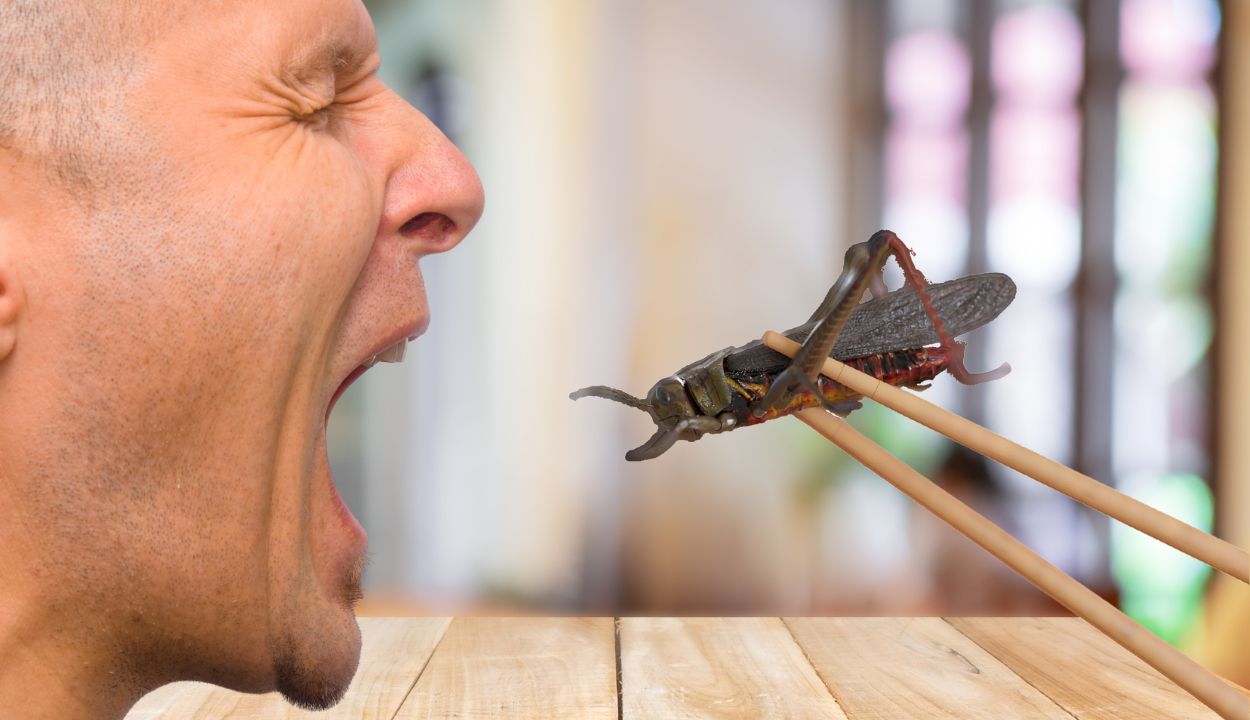From ancient delicacies to modern dining tables, insect-based foods are poised to become a culinary star as a sustainable and nutritious alternative protein source. While many cultures have embraced entomophagy for centuries, the Western world has been slow to catch on.
With the planet’s health in the balance and our appetites for innovation growing, could insects be the next big thing to hit our plates? We did some digging, consulted the experts, and examined all the angles. From overcoming psychological hurdles to uncovering insects’ nutritional profiles and sustainable farming benefits, bugs check all the boxes.
Let’s make the case for insect-based foods landing on a menu near you.
The Dietary Truths Behind Bug-Powered Nutrition
Are insects poised to swarm in as a future-focused food choice? With a budding Western culture setting its sights on sustainability, edible insects might be the next viable frontier.
We can no longer totally dismiss crickets, mealworms, and their kin as mere novelties covered in chocolate. They’re actually becoming quite serious contenders in the global quest for protein sources that don’t tax the planet.
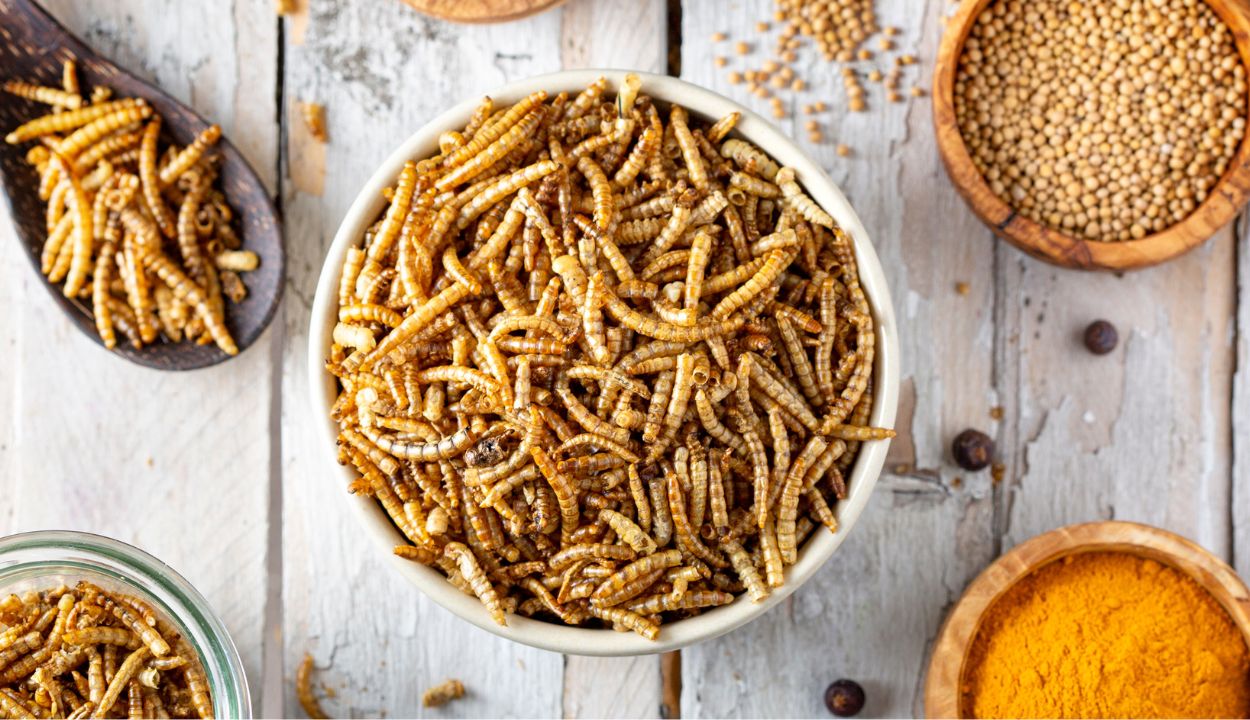
For example, crickets pack anywhere from 55% to 73% protein by weight. They eclipse beef’s 23% and make tofu’s 8% seem almost trivial in comparison. So, it’s a pivotal shift to consider as we face increasing global food demands.
However, protein aside, insects are a goldmine of nutrients, matching or even surpassing traditional meats in iron content and leading with higher levels of essential vitamins and amino acids. Insect fats are rich in unsaturated and polyunsaturated fatty acids, which are comparable to those recommended for heart health found in premium fish oils.
An even deeper look into the insect kingdom reveals a broad spectrum of nutritional benefits. Different insect species offer unique blends of vital minerals such as zinc, potassium, and selenium. This biodiversity challenges the monotony of our daily diets and introduces us to potentially superior nutritional choices.
Can We Western Worlders Overcome the Insect Ick Factor?
If you’re anything like me, you likely shudder at the thought of dining on insects. After all, when the ants go marching one by one around my kitchen, I reach for the Raid traps, not the spoon.
Nevertheless, insect-based foods gain ground as sustainability takes center stage in many of our life choices. It’s not like we’re blazing new trails here, either. Eating insects is common in many parts of the world; we just haven’t normalized it quite yet.
Overcoming the notion of eating bugs is going to require more than just introducing insect food products. We can’t just throw them on store shelves and hope for the best. We need to build familiarity and acceptance gradually.
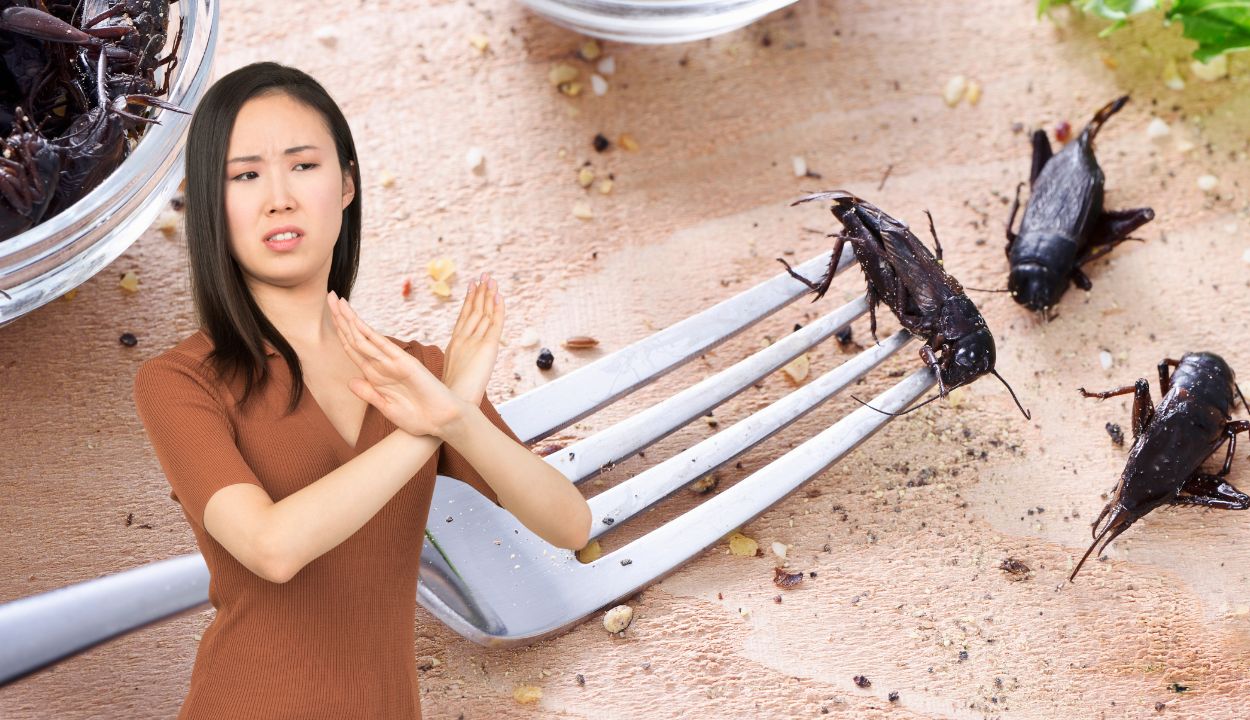
One strategy to consider is adding insects to familiar dishes or tapping into existing food trends. For instance, insects in the form of flour might feel more palatable than staring into its creepy little face. We can use cricket flour to make protein bars or blend it into smoothies.
But insects in their true form also have an exotic appeal that clever marketers can exploit. Highlighting the novelty aspect of insects attracts adventurous eaters and trendsetters looking for the next big thing in food. Pop-up restaurants, limited edition dishes in gourmet settings, and celebrity endorsements might also help pivot insects from novelty to norm.
On the flip side, there’s the possibility of creating a whole new generation of folks claiming they suffer from food neophobia—or the fear of trying new foods. Educational campaigns might help change perceptions. It’s a tall order, but folks will need to learn and understand the environmental and health benefits of insect-based diets.
These campaigns need to emphasize how insect food products offer a sustainable alternative to traditional protein sources, which require more resources and have a higher environmental impact. Community-based initiatives can help people learn about and taste insects to demystify their otherwise rotten appeal. Cooking classes, tastings at local markets, and school programs are all ways to introduce insects in a controlled, informative, and fun environment.
Biting Back on Bugs for Cost-Cutting Sustainable Eating
As the global population climbs and environmental concerns mount, insect food products look increasingly better as a source of nutritious sustainability. Insect farming doesn’t require nearly the amount of land usage compared to traditional livestock.
For example, crickets require far less land than cattle to produce the same amount of protein. They also consume less water. It takes thousands of gallons of water to produce a pound of beef, but insect rearing only requires a tiny fraction of that.
Insects also offer an impressive solution to one of our most pressing environmental issues: greenhouse gas emissions. Traditional livestock farming is a major contributor to these emissions, but insects produce a minuscule amount in comparison. For example, the production of mealworms emits 10 to 100 times less greenhouse gases per kilo than pigs.
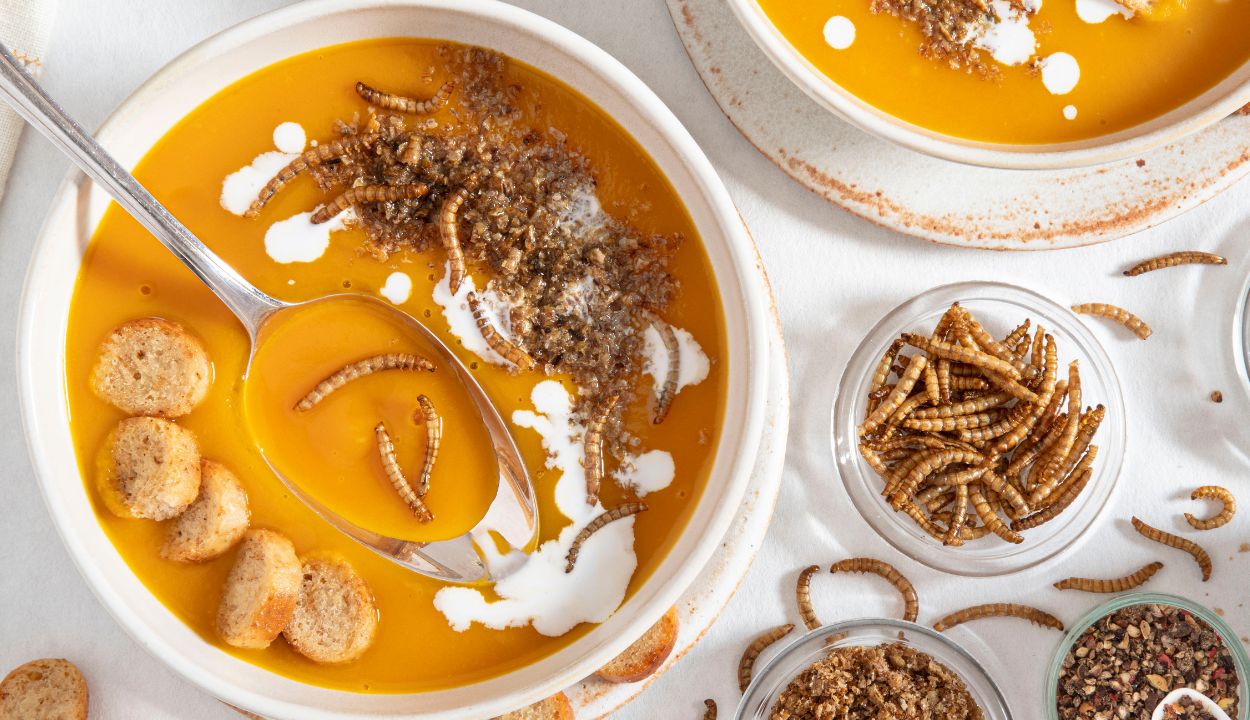
Insects are also champions in converting feed into protein. Crickets can convert up to 70% of their feed into edible body mass, whereas cattle typically achieve a conversion rate of only about 10%.
Water scarcity is also a growing concern, making the water-efficient nature of insect farming an environmental win. Insect farming uses substantially less water compared to livestock, which is crucial for sustainability in arid regions and for a global population facing water limitations.
Another key advantage is the low cost of insect-rearing setups. Unlike the extensive infrastructure needed for traditional livestock, insect farming requires minimal investment and is easily accessible for small-scale farmers and entrepreneurs worldwide.
Is There a Dark Side To Dining on Insect-Based Foods?
As insect-based foods gain traction as a sustainable food source, concerns about their safety and regulation become more prominent. After all, food safety is paramount when introducing any new food source, and insects are no exception.
The potential for microbiological risks, such as bacteria and parasites, is a concern that parallels traditional livestock. However, insects can also harbor specific pathogens depending on their diet and environment. Processing and preparing insect food products needs to be meticulously managed to mitigate these risks.
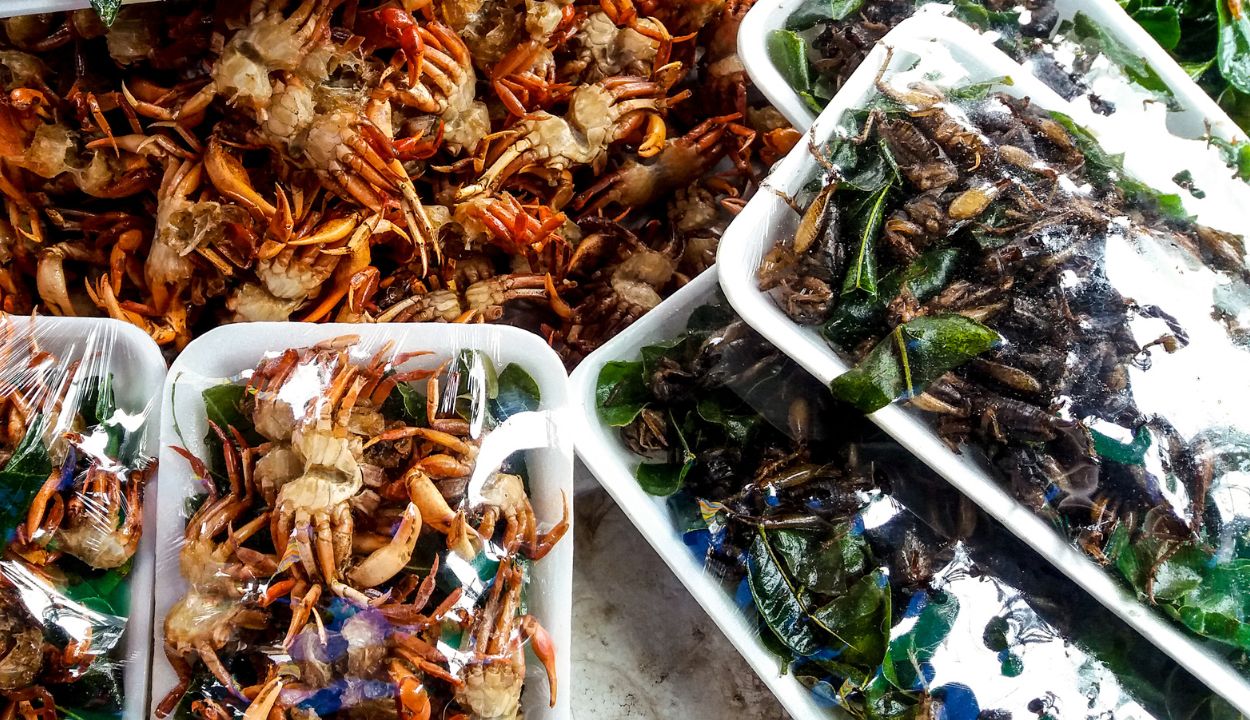
While some countries have already taken significant steps to regulate insect consumption, global standards are still developing. The European Union has begun to classify insects as “novel foods,” requiring specific safety assessments before they can be approved for consumption.
However, gaps remain in these frameworks, particularly in countries where insect consumption is a newer concept. Conversely, countries like Belgium, the Netherlands, and Thailand have regulatory frameworks that permit and support the sale and consumption of insects.
These regulations make sure that insect-based foods meet safety standards comparable to those of other animal products. They cover everything from farming practices to processing and packaging.
Insects can also pose allergenic risks, particularly for folks allergic to shellfish, as they may share similar proteins. Ongoing research and labeling will help manage allergenic risks and keep consumer safety at the forefront.
Still, the lack of standardized safety protocols for insect processing is a significant challenge. Developing and implementing these protocols will be essential as the industry grows. This includes everything from how we farm insects to how we process and prepare them for the market.
Bug Farming Goes High-Tech
The burgeoning insect farming industry is becoming a hub of technological innovation. Automated feeding and harvesting systems reduce labor costs and increase efficiency. Climate-controlled environments enhance growth rates and optimize breeding conditions to develop high-quality insect food products. Advanced imaging and AI can monitor the health and growth of insect populations, predicting outcomes and improving yields.
Ongoing research will continue to make insect-based foods more appealing and safe. While scientists work to refine the taste and texture of insects to cater to Western palates, safety research focuses on identifying potential allergens and pathogens that could affect both the insects and the consumers.

Thanks to innovations in farming techniques, insect farming is scaling up. Vertical farming maximizes space efficiency, allowing more significant production volumes within smaller areas. It increases yield and significantly reduces the farm’s carbon footprint.
There’s also a strong focus on enhancing the nutritional profiles of farm-raised insects. Research looks to manipulate diets and farming environments to increase the beneficial fatty acids, vitamins, and minerals naturally present in insects. This could lead to insect-based foods that are both sustainable and superior in nutritional value compared to traditional protein sources.
On the policy front, global initiatives increasingly support the edible insect industry. Governments and international bodies recognize the potential of insect farming to address food security and environmental challenges. Policy initiatives focus on funding research, smoothing regulatory paths, and supporting the commercialization of insect-based foods.
Should We Embrace a Future With Insects on Our Plates?
As we stand at the crossroads of dietary evolution and environmental necessity, insects present as a viable staple protein source. The benefits of integrating insect-based foods into our diets are compelling—sustainability, efficiency, and a rich nutrient profile make them a smart choice for a planet under pressure.
However, the journey to mainstream acceptance of insects as food has its challenges. The ‘ick’ factor remains a significant hurdle in Western cultures, where psychological aversions and deep-rooted dietary preferences dominate the culinary landscape. Overcoming these cultural barriers requires innovative marketing, ongoing education, and gradually introducing insect-based foods into familiar dishes.
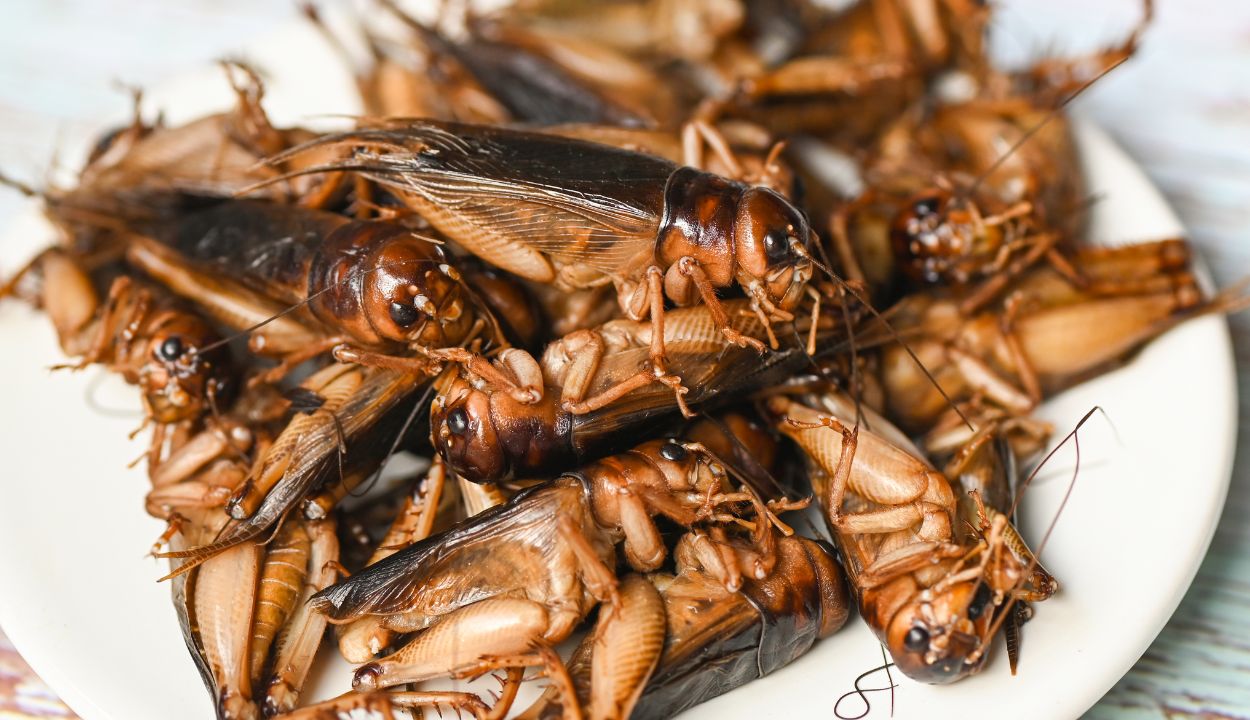
The shift towards insect consumption also hinges on the support of high-tech farming practices and further research aimed at improving the safety and appeal of insect food products. As technology advances, so too does the potential for insect farms to scale up and meet global food demands sustainably.
Looking ahead, integrating insects into the mainstream Western diet represents a change in what we eat and how we think about food. We’ll have to start recognizing insects’ role not merely as a survivalist alternative but as a modern solution to global food sustainability challenges.

